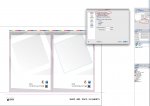padrao
Well-known member
Hi to all .
I have one question about freehand gradients .
I have one file, with a gradient from freehand, witch change from from 6 to 0.
After several test i always gets the banding, the steps are very visible .
Is there any way to produce a smooth gradient from freehand ?
See attached files with the problem .
All the Best
Padrao
I have one question about freehand gradients .
I have one file, with a gradient from freehand, witch change from from 6 to 0.
After several test i always gets the banding, the steps are very visible .
Is there any way to produce a smooth gradient from freehand ?
See attached files with the problem .
All the Best
Padrao












